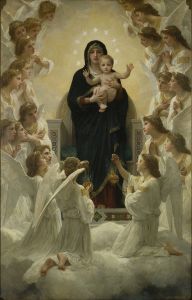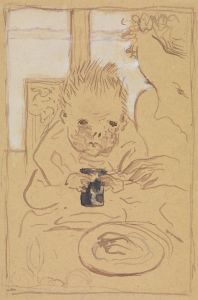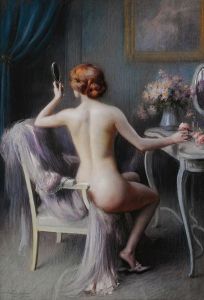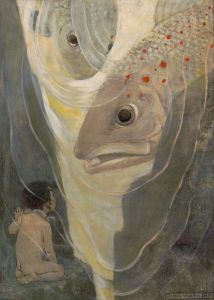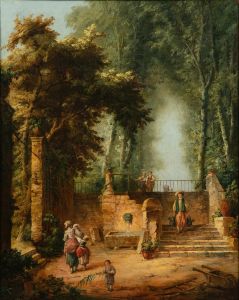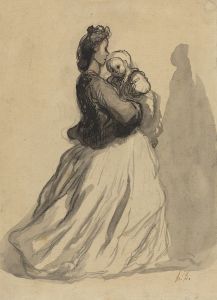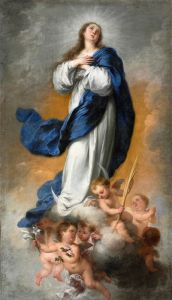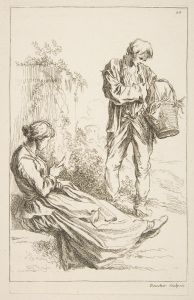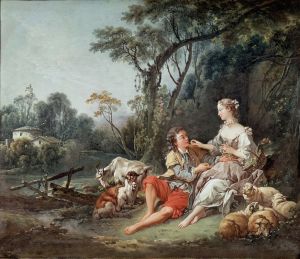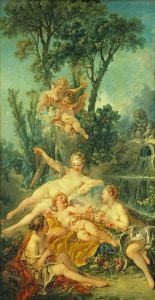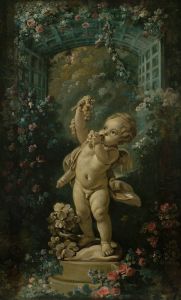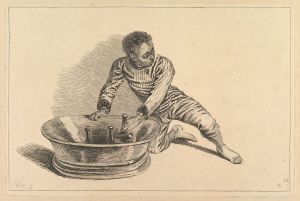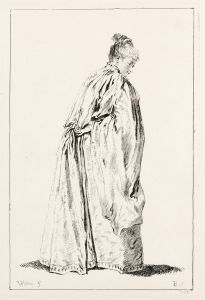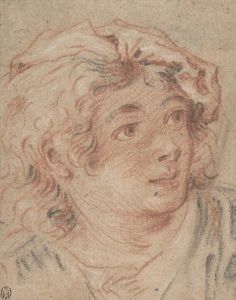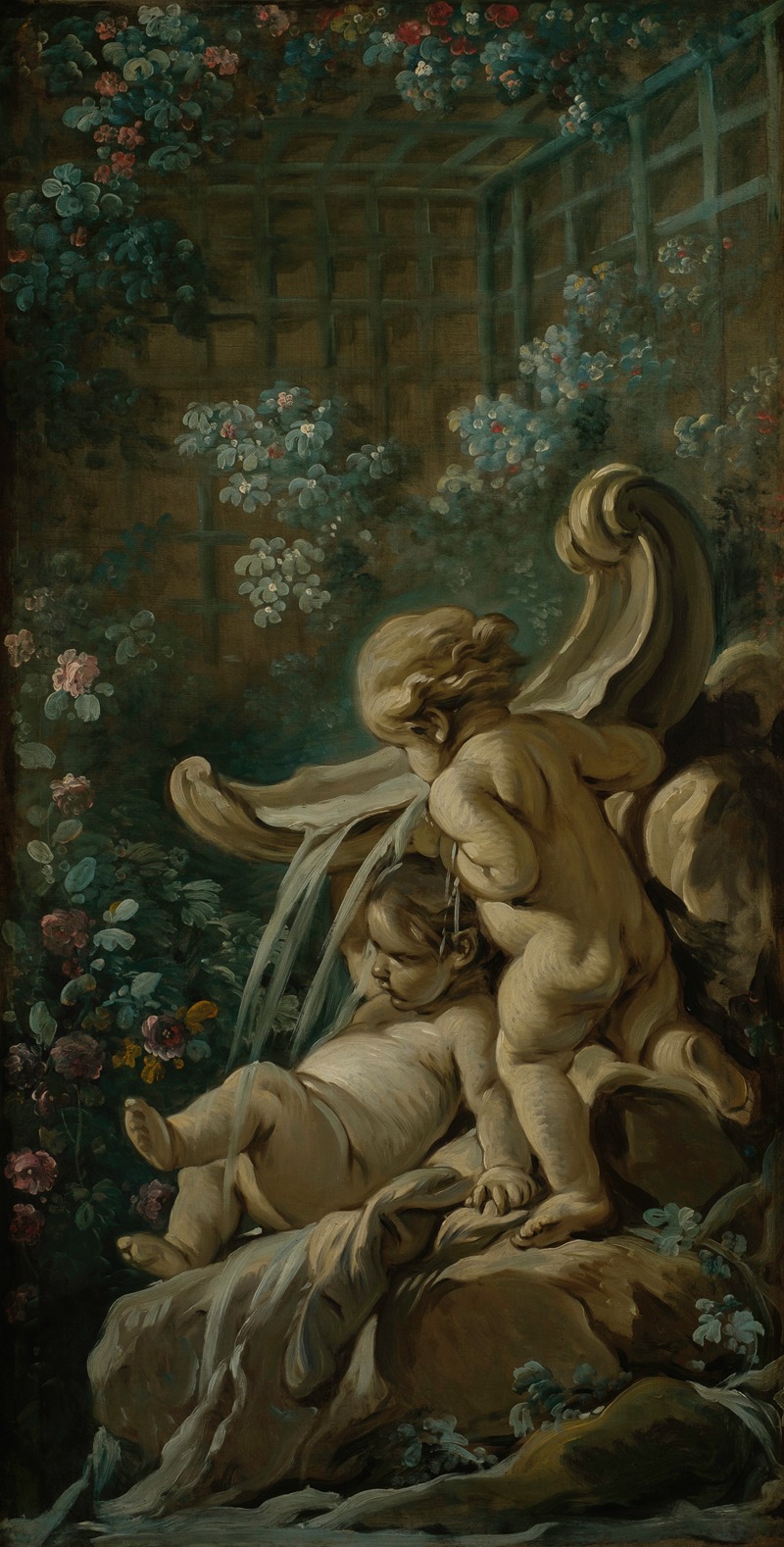
Fontaine avec deux amours dont l’un est couché
A hand-painted replica of François Boucher’s masterpiece Fontaine avec deux amours dont l’un est couché, meticulously crafted by professional artists to capture the true essence of the original. Each piece is created with museum-quality canvas and rare mineral pigments, carefully painted by experienced artists with delicate brushstrokes and rich, layered colors to perfectly recreate the texture of the original artwork. Unlike machine-printed reproductions, this hand-painted version brings the painting to life, infused with the artist’s emotions and skill in every stroke. Whether for personal collection or home decoration, it instantly elevates the artistic atmosphere of any space.
François Boucher was a prominent French painter of the Rococo style, known for his idyllic and voluptuous paintings of classical themes, decorative allegories, and pastoral scenes. One of his works, "Fontaine avec deux amours dont l’un est couché" (Fountain with Two Cupids, One of Whom is Reclining), exemplifies his mastery in capturing the playful and ornate characteristics of the Rococo period.
Boucher was born in Paris on September 29, 1703, and became one of the most celebrated artists of his time. He was a favorite of Madame de Pompadour, the chief mistress of King Louis XV, which significantly boosted his career. Boucher's work is characterized by its light-hearted themes, soft colors, and fluid lines, all of which are evident in "Fontaine avec deux amours dont l’un est couché."
This painting depicts a scene with two cherubic figures, commonly referred to as cupids or amours, which were a frequent motif in Boucher's work. The setting is a lush, garden-like environment, typical of the Rococo fascination with nature and the pastoral. One of the cupids is shown reclining, adding a sense of relaxation and leisure to the scene, while the other is engaged in a playful activity. The presence of a fountain adds an element of movement and life, as water was often used in Rococo art to symbolize purity and the flow of life.
Boucher's technique in this painting, as in many of his others, involves a delicate use of color and light. His palette often included soft pastels, which contributed to the dreamlike quality of his work. The brushwork is smooth and fluid, creating a sense of harmony and elegance. The figures are rendered with a sense of roundness and softness, emphasizing their youthful innocence and playful nature.
The Rococo style, which Boucher helped to define, was characterized by its ornate and decorative qualities. It emerged in early 18th-century France as a reaction against the grandeur and strict regulations of the Baroque period. Rococo art was lighter, more playful, and focused on themes of love, nature, and frivolity. Boucher's work, including "Fontaine avec deux amours dont l’un est couché," embodies these characteristics, making him a quintessential artist of the Rococo movement.
Boucher's influence extended beyond painting; he was also involved in designing tapestries, theater sets, and costumes, showcasing his versatility and the widespread appeal of his aesthetic. His work was not only popular in France but also influenced artists across Europe, contributing to the spread of the Rococo style.
"Fontaine avec deux amours dont l’un est couché" is a testament to Boucher's ability to capture the essence of Rococo art. It reflects the period's fascination with beauty, nature, and the playful aspects of love. While specific details about the painting's commission or its current location may not be widely documented, its style and thematic content are consistent with Boucher's broader body of work.
In summary, François Boucher's "Fontaine avec deux amours dont l’un est couché" is a quintessential example of Rococo art, showcasing the artist's skill in creating light-hearted, decorative scenes filled with charm and elegance. Through his use of color, composition, and subject matter, Boucher captures the spirit of an era that celebrated beauty and leisure.





